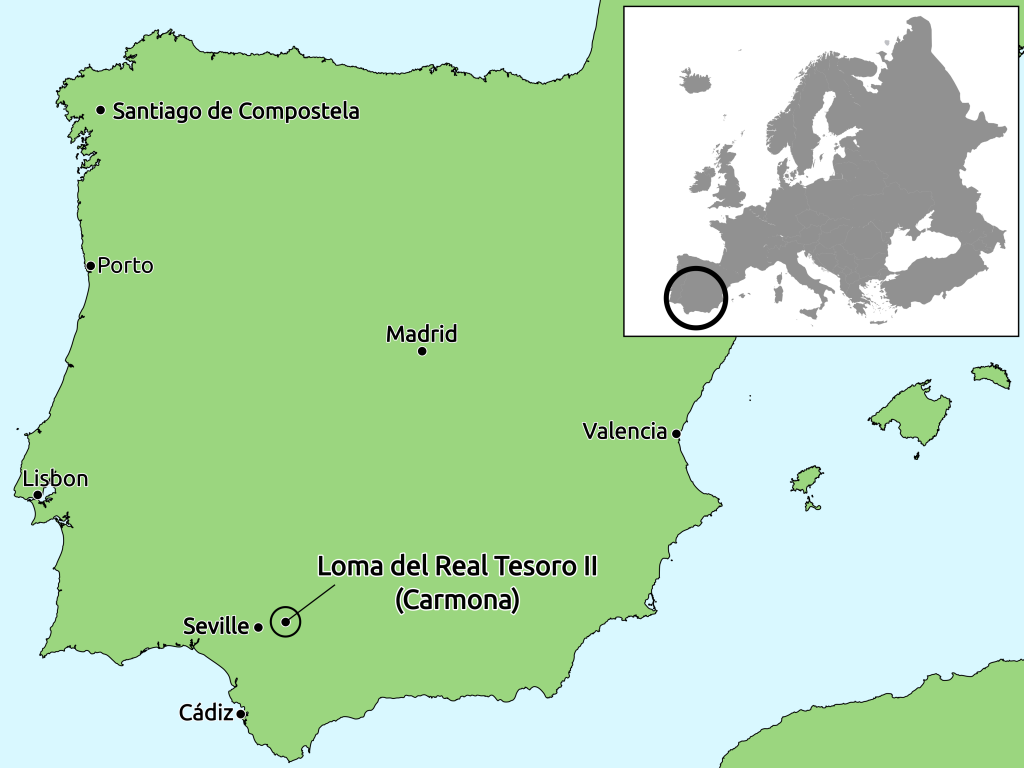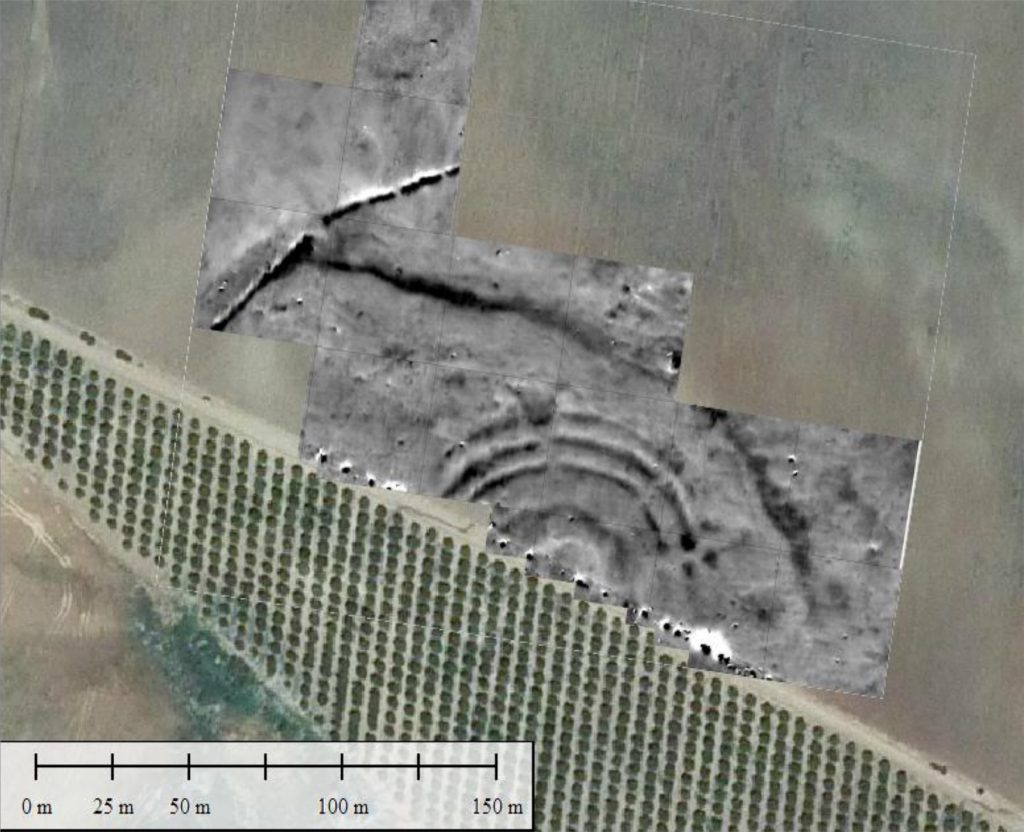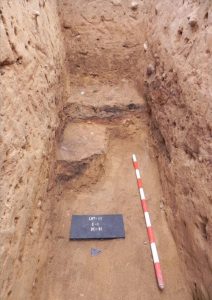New ditched enclosure excavated in Southern Spain

A new Prehistoric ditched enclosure called Loma del Real Tesoro II (literally ‘Royal Treasure Hill’) has been excavated in Southern Spain, near Carmona (Seville). Works have been carried out there by archaeologists from the ResourceCultures Collaborative Research Centre of Tübingen University (Germany), led by Professor Martin Bartelheim, in collaboration with Leonardo García Sanjuán, from the University of Seville (Spain). The group, which focuses on the socio-cultural dynamics deriving from the use of resources, is currently undertaking a research project in Southern Spain, centred upon the large site of Valencina de la Concepción (Seville) and its relations with other important places and regions. The interest of Loma del Real Tesoro for the ResourceCultures group lies in the data it can provide about the ways Southern Iberian populations of the Copper Age dealt with the natural resources of the region, as well as the repercussions of this, in terms of social relationships, trade connections and migrations.

The site was discovered in 2002 from Bell-Beaker pottery found on its surface, and in August 2015 it was the subject of magnetic survey, which yielded impressive results. Magnetometry shows several earthworks enclosing about 6 ha. Three parallel circular ditches with regularly spaced gaps in their layout, which in the specialised literature in English are called ‘causeways’, stick out. The causeways of every ring ditch are aligned with those of the other circular rings. There seem to be at least two more concentric ditches, both to the interior and the exterior of the three circular ditches just mentioned. On the inner side there is a sinuous ditch, with less clear gaps or causeways, that resemble those identified at sites like Outeiro Alto, Santa Vitória or Xancra in Southern Portugal. On the outer side, there is a much larger ditched enclosure with a number of causeways, one of which, in the NW, stands out because of its width. In the centre, a deep, circular pit some 19 m wide was detected. Other features (smaller pits, further ditches) are possible.
Part of the site was recently excavated, including the four inner ditches. This has provided enough data to date the site in the Bell Beaker period (c. 2600-2200 BCE). This would place the site as one of the more recent ditched enclosures in the Prehistory of southern Iberia, on par with others such as Bela Vista in Southern Portugal. Further research will be carried out, namely specific analysis of stone tools, sediment and pollen as well as isotopic analyses of animal bone samples. All in all, this appears to be an extremely intriguing site with the potential to provide much-needed high quality information thanks to the excellent work of Javier Escudero, Martin Bartelheim, Leonardo García Sanjuán and other archaeologists from the universities of Tübingen and Seville.

Sources:
“First Bell Beaker earthwork enclosure found in Spain”. Press release from Tübingen University, by Alexandra Niskios, M.A. ( 09.08.2016 10:21)
Javier Escudero Carrillo (personal communication).
Acknowledgements:
Thanks to both Javier Escudero for the information provided and for giving good answers to my questions, and to Tübingen University (via Alexandra Niskios) for giving us permission to use the images included in this post.
Leave a Reply